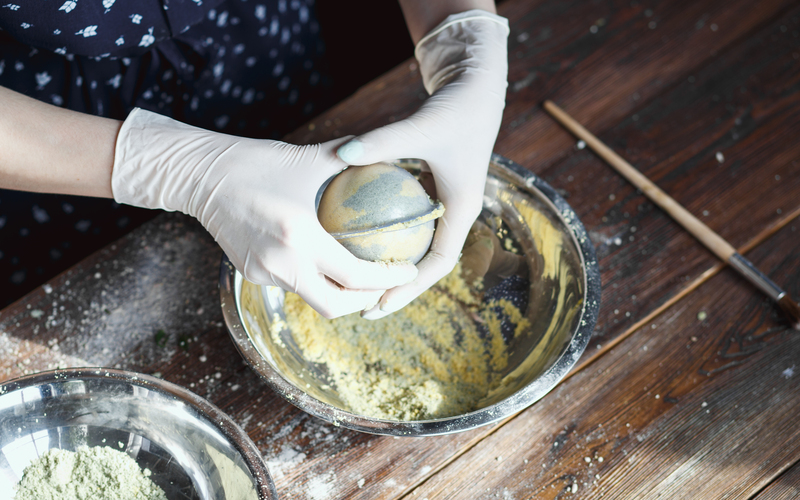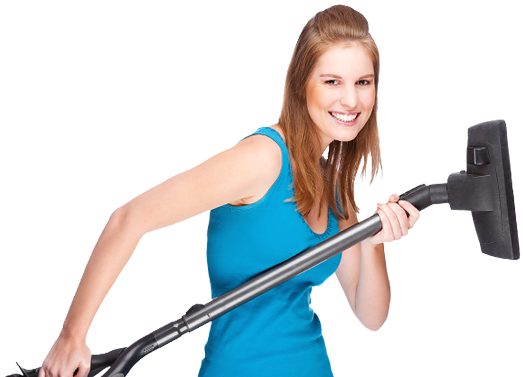Tenants' Cheat Sheet for End of Tenancy Cleaning
Posted on 04/06/2025
Tenants' Cheat Sheet for End of Tenancy Cleaning
Are you preparing to move out of your rented property? You may already know that a sparkling home is key to securing your deposit. While the words End of Tenancy Cleaning can strike fear into tenants, being well-prepared pays off. This cheat sheet will walk you through the essentials, highlight common mistakes, and help you leave your rental spotless.

Why Is End of Tenancy Cleaning So Important?
When your lease ends, your landlord or letting agent will inspect the property to ensure it is as clean and fresh as when you first moved in. Professional-standard cleaning is one of the most common conditions for receiving your full deposit back. Failing to carry out a thorough end of tenancy clean could result in deductions, delays, or even disputes.
- Most deposit disputes are due to cleanliness issues.
- Detailed inventory checks compare the property's initial and final state.
- Immaculate cleaning reflects your responsibility as a tenant.
- Landlords may hire professional cleaners at your expense if standards aren't met.
Before You Begin: Preparation and Checklist
Planning is critical for a successful end of tenancy cleaning process. Don't leave it to the last minute. Ideally, arrange to do the deep cleaning after you've moved all your personal items out, ensuring every nook and cranny can be accessed.
Create an End of Tenancy Cleaning Checklist
- Check your tenancy agreement for cleaning requirements
- Download or print a comprehensive cleaning checklist
- Purchase essential cleaning supplies
- Allow enough time (often a full day, or two for larger homes)
- Take 'before and after' photos for your records
Need some direction? Here's a handy end of tenancy cleaning checklist to stay organised:
Cleaning Supplies You'll Need
- All-purpose cleaners and disinfectants
- Degreasers and limescale remover
- Window/glass cleaner
- Bleach (handle with care!)
- Mops, buckets, microfibre cloths and sponges
- Vacuum and carpet cleaner
- Rubber gloves & protective clothing
- Scrubbing brushes (different sizes for crevices)
Room-By-Room: How to Clean Each Space
Kitchen
The kitchen often requires the most elbow grease during end of lease cleaning due to stubborn grease and food stains. Focus attention on appliances, cupboards, and worktops.
- Empty and deep-clean the fridge and freezer. Defrost the freezer, remove all shelves, clean with warm soapy water, and dry thoroughly.
- Oven and hob: Remove burnt residue, soak racks and trays. Use a dedicated oven cleaner. Don't forget beneath the hob, control panels and knobs.
- Degrease and wipe all kitchen cupboards inside, outside, and on top where dust gathers.
- Sanitise sinks and taps. Remove limescale from taps and shines up stainless steel.
- Clean microwaves, kettles, and other appliances inside and out. Remove crumb trays where applicable.
- Wipe down worktops, tiles, and splashbacks. Disinfect handles and high-touch surfaces.
- Take out all rubbish and thoroughly clean bins.
Bathrooms
Landlords are particularly attentive to bathroom cleanliness at check-out.
- Toilet: Use limescale remover and disinfect thoroughly.
- Descale and shine up all taps and shower heads.
- Bathtub, shower enclosure, and sink: Scrub away stains, mold, and soap scum.
- Wipe down mirrors, shelves, towel rails, and fittings.
- Mop the floor and remove any hairs from plugholes.
- Extractor fans and vents: Dust and clean these often-overlooked spots.
Living Areas & Bedrooms
Tenants often underestimate the amount of dust and hidden dirt in the living room and bedrooms. A thorough end of tenancy cleaning here also prevents allergens.
- Vacuum carpets, rugs, and soft furnishings. Consider professional carpet cleaning if there are stains.
- Clean under and behind furniture--be thorough!
- Wipe down all skirting boards, doors, and handles.
- Wash or dust all blinds, curtains, and window sills.
- Clean marks off walls with a gentle sponge (check paint durability first).
- Polish all mirrors, picture frames, and light switches.
- Remove cobwebs from corners and ceilings using an extendable duster.
Windows & Glass
- Ensure all windows (inside & outside) are cleaned where safe and possible
- Polish mirrors and shower screens
- Don't miss out on window tracks and frames
Hallways and Entryways
These high-traffic zones can accumulate dust and dirt quickly.
- Vacuum or mop all floors
- Clean all doors and handles
- Wipe down light switches and skirting boards
- Remove marks from walls and baseboards
Outside Spaces & Extras
- Balconies, patios, gardens: Sweep and tidy as required.
- Bins: Empty and wipe down both inside and out.
- Garage and outbuildings, if you're responsible, should be left clean and free from items.
Common End of Tenancy Cleaning Mistakes to Avoid
Many tenants risk deposit deductions by overlooking certain areas or not cleaning to the expected standard. Here are the top common mistakes to avoid:
- Leaving cleaning until moving day, leading to a rushed, incomplete job
- Using incorrect products (e.g. bleach on stone, harsh chemicals on painted surfaces)
- Overlooking hidden areas, such as inside cupboards, extractor fans, and light fixtures
- Forgetting windows, blinds, skirting boards, and behind radiators
- Not removing limescale, soap scum, or hard water stains in bathrooms and kitchens
- Ignoring stains on carpets or upholstery (sometimes these require specialist cleaning)
DIY or Professional End of Tenancy Cleaning - Which Should You Choose?
The decision comes down to your time, budget, and the landlord's expectations. Here are the pros and cons:
DIY End of Tenancy Cleaning
- Pros: Saves money, gives you control, can be scheduled on your timeline.
- Cons: Time-consuming; may be less thorough than professionals.
Hiring a Professional End of Tenancy Cleaner
- Pros: Expert cleaning, speeds up process, often comes with a guarantee so you can request re-cleaning if needed.
- Cons: Costs more; you need to research and choose a reputable company.
Some tenancy agreements require a professional cleaning receipt. Check this before making a decision!
Frequently Overlooked Tasks During End of Lease Cleaning
- Cleaning inside washing machines and dishwashers, including filters
- Emptying and cleaning cupboards and drawers (kitchen, bathroom, bedroom)
- Removing fingerprints and stains from walls, doors, and light switches
- Cleaning air vents and extractor fans
- Washing or replacing shower curtains and bath mats
- Descaling taps and shower heads
Tip: Before handing back the keys, do a final walkthrough with your checklist to tick off each task. That way, you ensure nothing is missed!
How to Make End of Tenancy Cleaning Easier
- Spread out tasks over several days leading up to the move
- Enlist help from friends or family for big jobs
- Dedicate a box or bag for cleaning supplies and keep it easily accessible
- Work systematically: top to bottom, back to front of each room
- Play upbeat music or listen to an audiobook to make cleaning more enjoyable
- Don't forget to clean light bulbs--they easily collect dust and look much brighter when cleaned!

End of Tenancy Cleaning FAQ
Q: How clean does my rental need to be at the end of the tenancy?
A: The property should be cleaned to a "professional standard". This means everything should be at least as clean as when you moved in, with no visible dirt, stains, or bad odours remaining.
Q: Do I need to clean windows from outside?
A: Yes, where it is safe and possible to do so. If windows cannot be easily or safely reached, you may only be responsible for the inside.
Q: Can my landlord insist on professional cleaning?
A: If your tenancy agreement strictly requires professional end of tenancy cleaning or you received the property in professionally cleaned condition, you may need to hire a cleaning service and provide a receipt.
Q: What happens if I miss something?
A: Your landlord or agent may deduct money from your deposit to cover the cost of cleaning, or they may request that you return to fix missed areas.
Final Tips for End of Tenancy Cleaning Success
- Take photos before and after your clean for proof in case of disputes.
- Refer to your inventory and check-in report to match the original condition.
- Keep all receipts for professional cleaning if required by your tenancy agreement.
- Check inside all appliances (oven, fridge, washing machine, dishwasher) and empty them fully.
- Remove all rubbish and personal items before the final inspection.
- Make sure to return all keys and leave nothing behind.
Ultimately, thorough end of lease cleaning not only secures your deposit but also helps you leave on good terms. Investing time and elbow grease, or hiring the right professionals, can make all the difference between a stress-free move and a drawn-out dispute. Follow this cheat sheet to ensure your end of tenancy clean goes smoothly and your time as a tenant ends on a sparkling note!
Ready for your next rental? A spotless handover sets a great reference for your future landlords, too. Happy cleaning!


